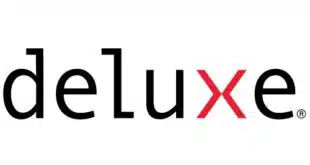Facing many of the same pressures that led its rival MasterCard Inc. to go public earlier this year, Visa announced on Wednesday it plans to scuttle the membership-association structure that has characterized it throughout its 36-year history in favor of a sweeping reorganization that will lead to ownership by the public. Visa says it expects the process, which will result in a company to be called Visa Inc., to take anywhere from 12 to 18 months to complete now that the boards of its six global regions and of Visa International have approved the plan. In the end, the new company will have a new board of directors and a chief executive from outside the ranks of the San Francisco-based association. In subjecting itself to the forces of the capital markets, Visa is likely to become more innovative, some experts say, but the net result for its current bank members could be less clearly positive. “The organization will become more competitive over time,” says Eric Grover, principal at Intrepid Ventures, a Menlo Park-based consulting firm that follows payments processing. “But it's not a wholly good thing for banks that Visa and MasterCard are independent. [They] like the idea of having a sleepy, compliant payments utility.” On the whole, Grover says, the ultimate market valuation for Visa should be “very healthy.” The plan calls for a two-stage restructuring. In the first stage, five of the six regions will merge to form Visa Inc. These regions include Visa USA and Visa Canada, as well as the operating regions of Visa International: Latin America and the Caribbean; Asia-Pacific; and Central and Eastern Europe, Middle East, and Africa. Visa Europe will remain a bank-owned association and will become a licensee of Visa Inc. Under the plan, Visa Europe will take a minority stake in Visa Inc. and Visa Inc. will maintain a minority interest in the European operation. In the second stage, Visa Inc. will launch an initial public offering of stock and will list on an as yet undetermined exchange. It will have a board that will include a majority of independent directors, though the number of directors has not been announced. Visa says it has already started searching for independent directors and a chief executive for Visa Inc. The association says internal candidates will not be considered for the top post at Visa Inc., a decision that rules out current Visa USA chief executive John Philip Coghlan, 55, who assumed his duties in July 2005. The move, while massive in scope, has been expected in some quarters of the electronic payments industry as banks and processors cope with the challenges of introducing new technology to support transactions ranging from contactless and mobile payments to Internet traffic to multiple varieties of prepaid debit. But perhaps the biggest impetus for the move stems from legal action being brought against both Visa and MasterCard, as well as a number of major banks, by merchants alleging the networks' interchange-pricing structure amounts to unlawful price fixing. These cases, which are being consolidated into a federal class action, have the potential to financially cripple the defendants, an outcome some say the associations hope to avoid by ditching their traditional bank-ownership structures and issuing shares to the public. Visa says its decision should spur growth and allow it to better serve customers globally, but it also says the restructuring will help it address what it calls legal claims in some markets. “The driver here is exactly the same driver that drove MasterCard?the reduction of legal liability,” says Grover.
Check Also
Mastercard Looks to Support Stablecoins in a Deal With Wallet Provider MoonPay
The big card networks have worked for several years to exploit the growing business of …





